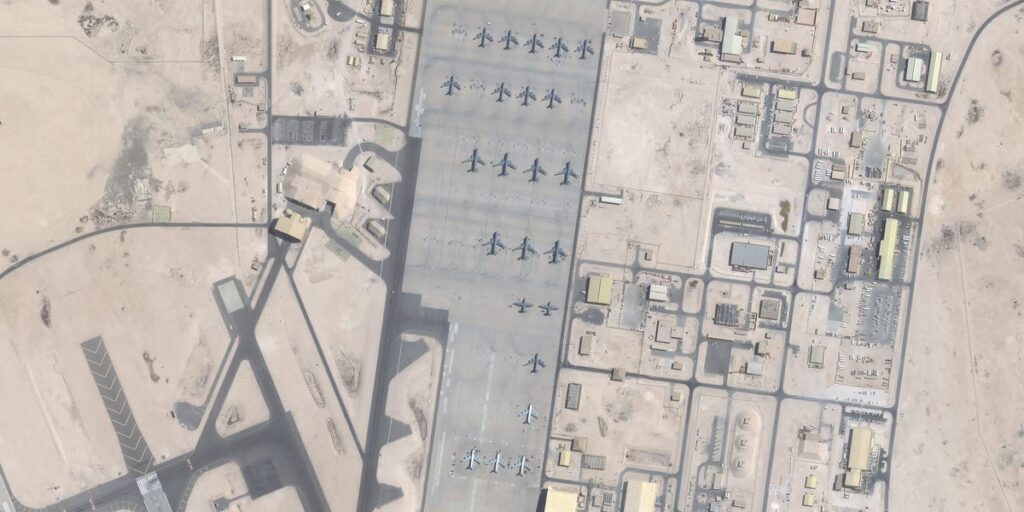New satellite imagery shows dozens of US military aircraft missing from a key Middle Eastern base that could be vulnerable to Iranian strikes if American forces join the conflict with Israel.
In a June 5 image, captured by the US commercial satellite imaging company Planet Labs and reviewed by Business Insider, around 40 aircraft of various types can be seen parked on the tarmac at the Al Udeid airbase in Qatar.
But only three aircraft could be seen on the tarmac in another image captured on Thursday.
Planet Labs PBC
Planet Labs PBC
The move’s purpose is unclear, but the large-scale aircraft departure could be a possible move to protect them from Iranian retaliatory attacks if the US military joins Israel in carrying out offensive strikes against Tehran’s nuclear program.
Iran’s supreme leader has threatened the US, warning it not to intervene in the conflict, which is entering its second week. Al Udeid, America’s largest base in the Middle East and located just across the Persian Gulf, could be a prime target for Tehran, along with other nearby military installations.
Al Udeid hosts a number of military assets, including the 379th Air Expeditionary Wing’s airlift, aerial refueling, and intelligence, surveillance, and reconnaissance capabilities.
US Air Force/Capt. Mahalia Frost, via AP
Agence France-Presse first reported the dispersal of US aircraft from Al Udeid. US Central Command, which oversees military operations in the Middle East, did not provide comment.
President Donald Trump has hinted in recent days that the US could join Israel’s campaign. There has been speculation that such action could involve sending in B-2 Spirit stealth bombers to drop the massive bunker-buster munitions on Iran’s hardened Fordow nuclear facility.
The 15-ton GBU-57 Massive Ordnance Penetrator, or MOP, is one of the most powerful non-nuclear bombs and the largest bunker buster in the US arsenal. It is likely the only conventional munition capable of damaging Fordow, buried deep in the side of a mountain. It is unique to the US, as it can only be carried by the B-2 bomber.
“I may do it, I may not do it,” Trump told reporters earlier this week of plans to strike Iran. “Nobody knows what I’m going to do.”
US Air National Guard Photo by Airman First Class Ivy Thomas
The dispersal of aircraft at Al Udeid, a possible security move, comes amid the larger build-up of US military forces in and around the Middle East, including fighter jets, tanker planes, warships, and even a second aircraft carrier.
US Navy destroyers in the Eastern Mediterranean Sea and American ground troops in the Middle East have already been involved in defending Israel from Iranian retaliatory missile attacks that began last Friday after Israeli officials announced the start of a new operation to harm Tehran’s nuclear program and began conducting bombing operations.
Over the past week, Israeli fighter jets have launched widespread airstrikes on targets across Iran, targeting the country’s nuclear facilities, top scientists, senior commanders, missile launchers, air defenses, bases, and other high-profile military assets.
Iran has retaliated by launching hundreds of missiles and drones at Israeli cities.

